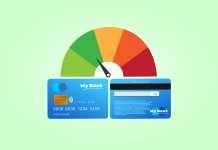It’s no secret that bank saving accounts offer low-interest rates. In fact, the average rate for a savings account is just 0.09%. While this may not seem like a lot, it can add up over time. If you have a large sum of money saved up, you may be better off looking into alternative options.
There are a number of alternatives to bank saving accounts that you should be aware of. These alternatives include things like money market accounts, investing in crypto, high-yield savings accounts, and certificates of deposit. Each one has its own set of benefits and drawbacks, so it’s important to do your research before opening an account.
Here are the top 6 alternatives to bank saving accounts:
Money Market Accounts
A money market account is a savings account that typically offers higher interests than traditional savings accounts. The interest rate is still relatively low, but it’s higher than what you would get with a standard savings account. Money market accounts also typically have higher balance requirements.
For example, some money market accounts offer an interest rate of 0.50%. That’s significantly higher than the 0.09% you would get with a standard savings account. However, you will probably need a minimum balance of $25, for example, to open an account.
Money market accounts often have withdrawal limits. For example, you may only be able to make a couple of withdrawals per month. If you want to access your money more frequently than that, a money market account may not be the best option for you.
Investing In Crypto
Investing in crypto is one of the riskier alternatives to bank saving accounts, but it can also be one of the most lucrative. If you invest in the right cryptocurrency, you could see massive gains. For example, Bitcoin has grown by over 1,000% in the past year.
Cryptocurrency conversions are the process of exchanging one cryptocurrency for another. There are a number of different exchanges that offer this service, and the process can be a little confusing for first-time investors. As the guys from Crypto Yield Hunter say not all trading pairs may be available for conversion, depending on the tool you’re using. That’s why it’s important to do your research before choosing an exchange.
Some of the factors you’ll want to consider include the fees, the selection of coins offered, and the security of the platform.
Of course, there’s no guarantee that your investments will succeed. Cryptocurrencies are notoriously volatile, and prices can swing wildly up and down. If you’re not comfortable with that level of risk, investing in crypto may not be the right choice for you.
High Yield Savings Accounts
A high-yield savings account is a type of savings account that offers a higher interest rate than a traditional savings account. For example, some high-yield savings accounts offer an interest rate of 1.50%. That’s significantly higher than the 0.09% you would get with a standard savings account.
High-yield savings accounts typically have higher minimum balance requirements and may also have withdrawal limits. For example, you may need a minimum balance of $5,000 to open an account. Additionally, you may only be able to make six withdrawals per month.
Certificates Of Deposit
A certificate of deposit (CD) is a type of savings account that offers a higher interest rate in exchange for a fixed-term deposit. For example, you may open a CD with a term of 12 months and an interest rate of 1.50%. That means you’ll earn 1.50% interest on your deposit over the course of 12 months.
At the end of the term, you can withdraw your money plus any interest you’ve earned. CDs typically have early withdrawal penalties, so it’s important to make sure you won’t need to access your money before the end of the term.
Savings Bonds
Savings bonds are a type of government-issued bonds that offer a guaranteed interest rate. For example, you may purchase a savings bond with a face value of $100 and an interest rate of 2%. That means you’ll earn $2 in interest each year.
The interest rate on savings bonds is fixed for the life of the bond. However, the interest is only paid when the bond matures. For example, a five-year bond will mature in five years. At that point, you can cash in the bond and receive the face value plus any accrued interest.
Savings bonds are a relatively safe investment, but they do have some risk. For example, if interest rates rise, the value of your savings bond will decrease. Additionally, savings bonds are subject to inflation risk. That means the purchasing power of your investment may decline over time.
Peer-To-Peer Lending
Peer-to-peer lending (P2P lending) is a type of loan that’s funded by multiple investors. For example, you may take out a P2P loan for $10,000. That loan would then be funded by 10 different investors who each contribute $1,000.
P2P loans typically have lower interest rates than traditional loans because they’re not funded by a bank. Instead, they’re funded by individual investors who are looking to earn a higher return on their investment.
P2P loans also have some risks. For example, if one of the investors stops making payments, you may be responsible for repaying the loan. Additionally, P2P loans are not backed by collateral, so there’s a chance you could lose your money if you default on the loan.
Additionally, P2P loans are not FDIC insured. That means there’s no guarantee your money will be safe if the lending platform goes out of business, or if the borrower defaults on the loan.
There are a number of alternatives to bank saving accounts, each with its own set of benefits and drawbacks. It’s important to do your research before opening an account to find the option that best suits your needs. Your best bet may be a mix of several different types of accounts to diversify your risk. The bottom line is that there are a number of options available, so be sure to explore all your options before making a decision.
























